If you're wondering what that long stranded brown vegetable in your bibimbap is, it's a classic Korean side dish called gosari. The hardest part is not making it but finding it.

What do you call it?
For the longest time, this was just a "weird Korean brown vegetable." One time I asked what it was in a restaurant, and they replied "mountain vegetable."
If you knew this was called gosari in Korean, you really do deserve an honorary medal.
The pronunciation, btw, is not so much "GO-SORRY" but more like "goh-so-ree" with a soft g and a little roll to the r.
Other names you may see this dish called:
- Gosari namul (the Korean name of this dish)
- Fern bracken
- Bracken fern
- Fernbrake
- Pteridium Aquilinum (the scientific name)
- Fiddlehead ferns
- Bracken fiddleheads
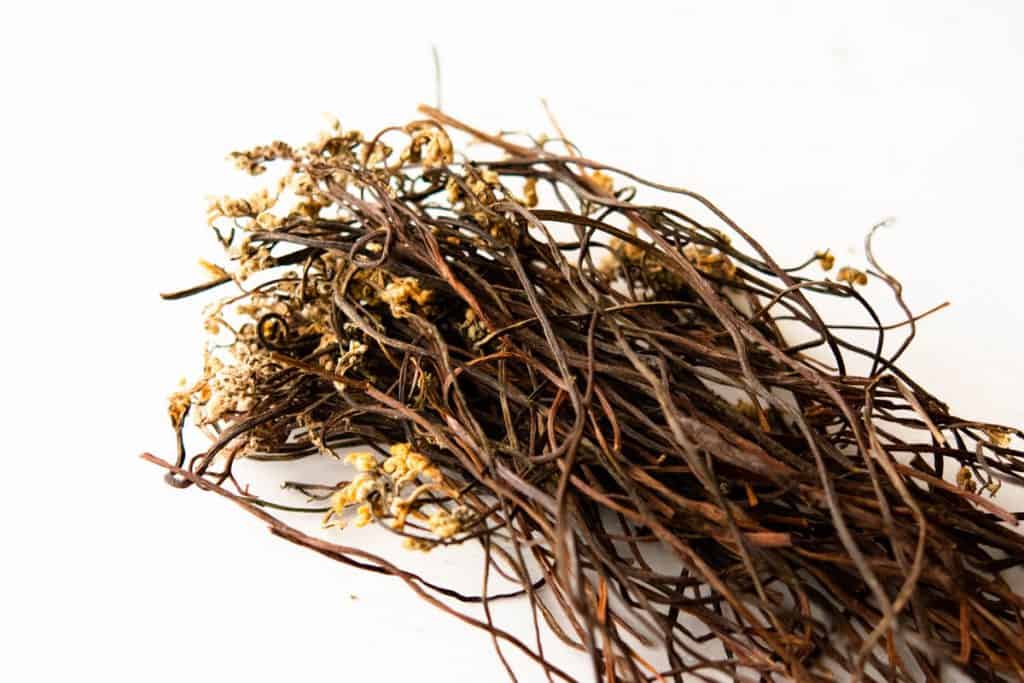
It is commonly found in bibimbap rice bowls or the hot beef noodle soup known as yukaejang.
Fern origins
According to Lee Wade's Korean Cookery cookbook, gosari is "edible racken, young shoots, gathered in April and May and sold fresh at that time, when they are delicious. Large quantities are also dried...those that have been dried are not so good to eat as the fresh ones."
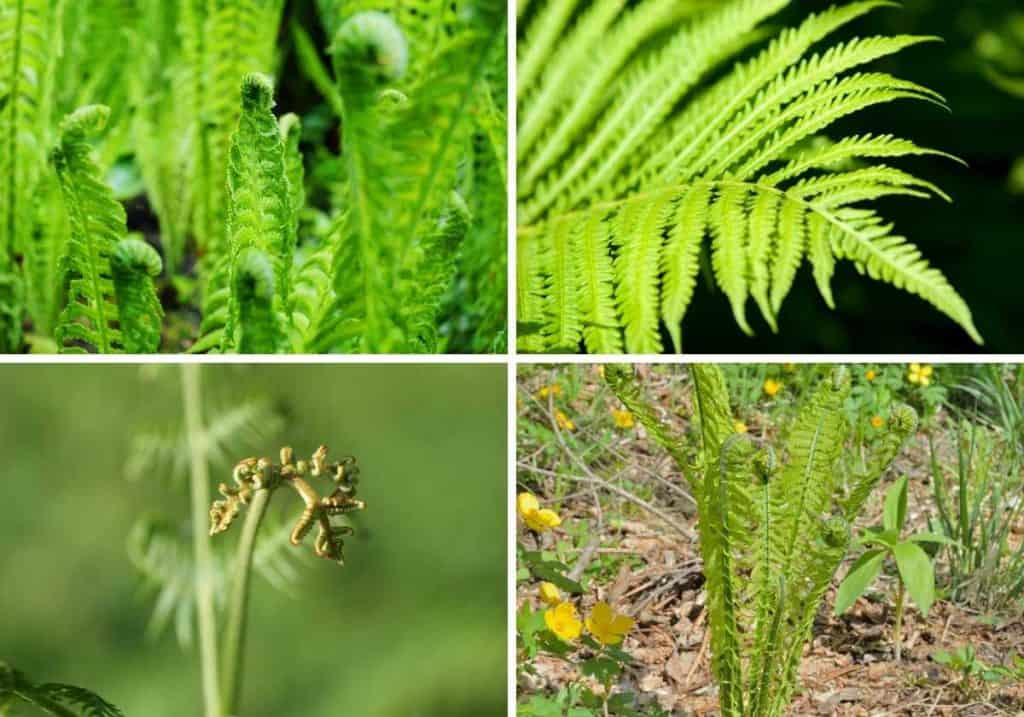
Now how you get this dark brown vegetable from a bright green fern always confused me, but it starts green and turns brown when it dries.
Where do you buy it?
Fresh bracken can be foraged in the wild. However, it can be found in the dried vegetable aisle of the Korean supermarket or on Amazon:
Dried without flowers here - assi brand
Dried with flowers here - ROM America brand
In addition, it can be found in the refrigerator section of the Korean market, usually near the pickled vegetables, already rehydrated and ready to go.

How many calories are in gosari?
Per the USDA, 100g of raw fiddlehead ferns is 34 calories.
With additional seasonings, one serving in this recipe below is 51 calories.
Does it cause cancer?
Fiddlehead ferns have ptalquiloside, a known carcinogen. However, studies have shown that boiling and salting the vegetable can denature and greatly reduce this toxin.
As we know, many things cause cancer, including the char on grilled meat, red food color, and stress.
To each their own, and everything in moderation as Julia Child would say.
How to cook it
Time needed: 1 hour
Rehydrating the gosari takes the longest time. After that, it's a quick stir fry.
- Cook fern brake
Put dried fern brake into a pot and cover with water. Bring to a boil and simmer for 30-45 minutes, covered.
- Turn off the heat and let fern brake sit.
This will allow it to soften further.
- Drain and chop
Chop into thirds to make manageable sized pieces for eating.
- Saute
Heat a pan with oil and stir fry with minced garlic over medium heat.
- Season
Finish with soy sauce. Taste for seasoning and adjust with salt if needed.
- Serve hot, room temperature or cold.
Keep for up to a week in the fridge.
Helpful Tips
- You can buy dried fernbrake in the vegetable aisle or presoaked fernbrake in the refrigerator section of Korean markets.
- Fernbrake can come with or without flower buds at the top. Either variety will work depending on your preference or what you can find.
- If you care not to cook your fern brake for 45 minutes, you can soak overnight to reduce cooking time. The texture should be soft but not mushy.
- If you prefer not to cook with sesame oil due to its low smoke point, you can use another oil and finish with a little bit of sesame oil after cooking for flavor.
- This will last up to a week in the fridge.
- Serve as a side dish or add to Korean dishes such as bimbap or yuk gae jang.
Recipe
Korean Fernbracken
Ingredients
- 2 oz dried fern brake about a small handful of dried strands
- 2 Tb sesame oil, or other oil see Note 4
- 2 cloves garlic minced
- 3 Tb soy sauce
Optional Garnish
- toasted sesame seeds
Instructions
- Put fern brake in a large pot and cover with water. Bring to a boil, and simmer, covered, for 30-40 minutes until the strands are hydrated and thick.
- Turn off the heat and let sit for another 15-20 minutes. This helps them soak up more water and get softer. Drain and set aside.
- Heat a pot to medium heat. Add the garlic and gently stir fry for 30 seconds until fragrant.
- Add the hydrated and drained fern brake. Add soy sauce and stir fry for a few minutes until heated through. Taste and check for seasoning. Add salt if needed.
- Serve warm, room temperature, or cold.
Notes
- You can buy dried fernbrake in the vegetable aisle or presoaked fernbrake in the refrigerator section of Korean markets.
- Fernbrake can come with or without flower buds at the top. Either variety will work depending on your preference or what you can find.
- If you care not to cook your fern brake for 45 minutes, you can soak overnight to reduce cooking time. The texture should be soft but not mushy.
- If you prefer not to cook with sesame oil due to its low smoke point, you can use another oil and finish with a little bit of sesame oil after cooking for flavor.
- This will last up to a week in the fridge.
- Serve as a side dish or add to Korean dishes such as bimbap or yuk gae jang.







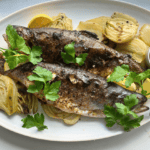
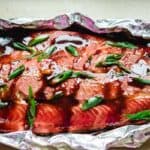
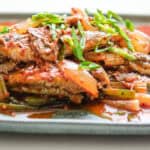









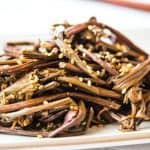
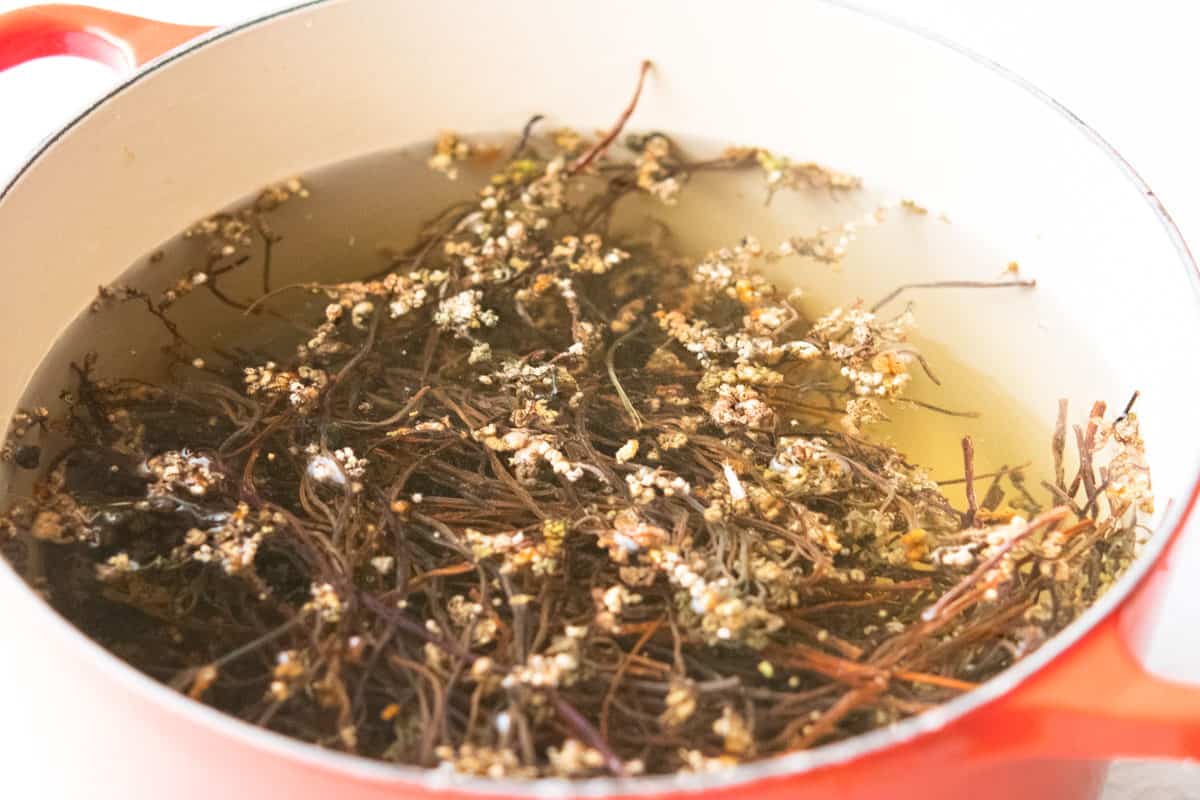

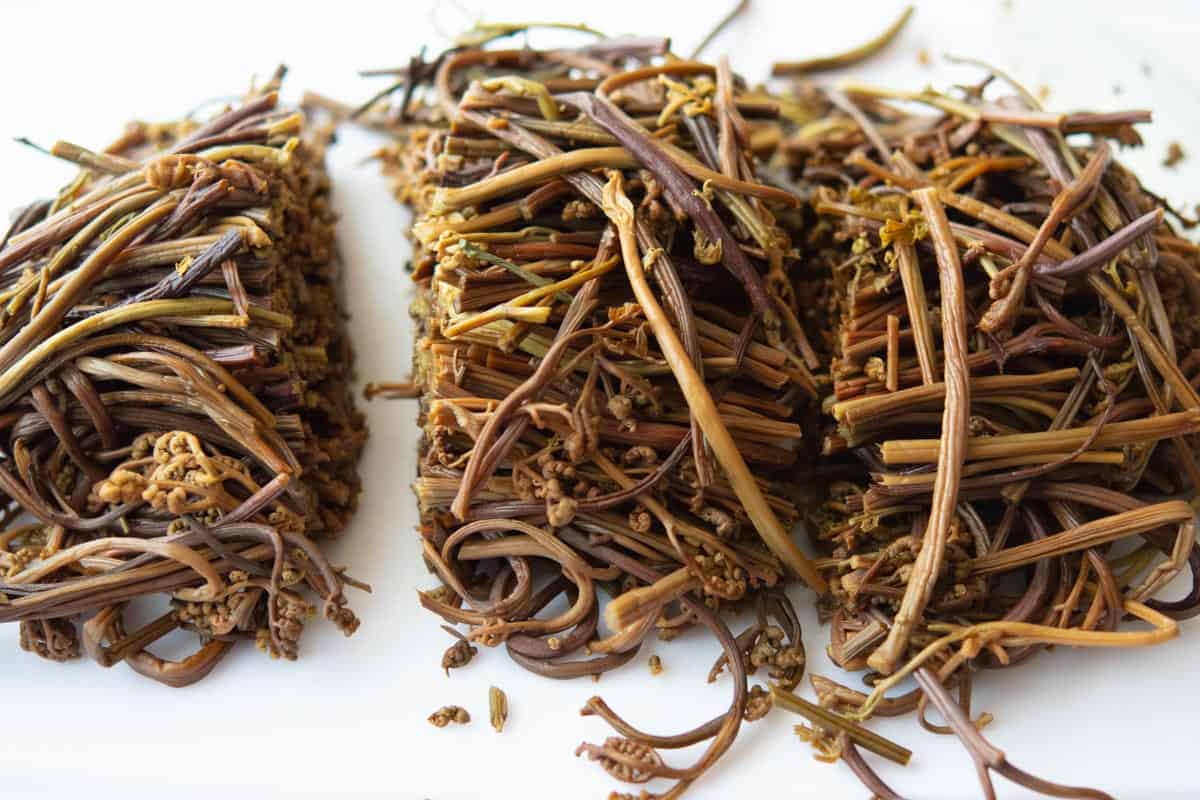

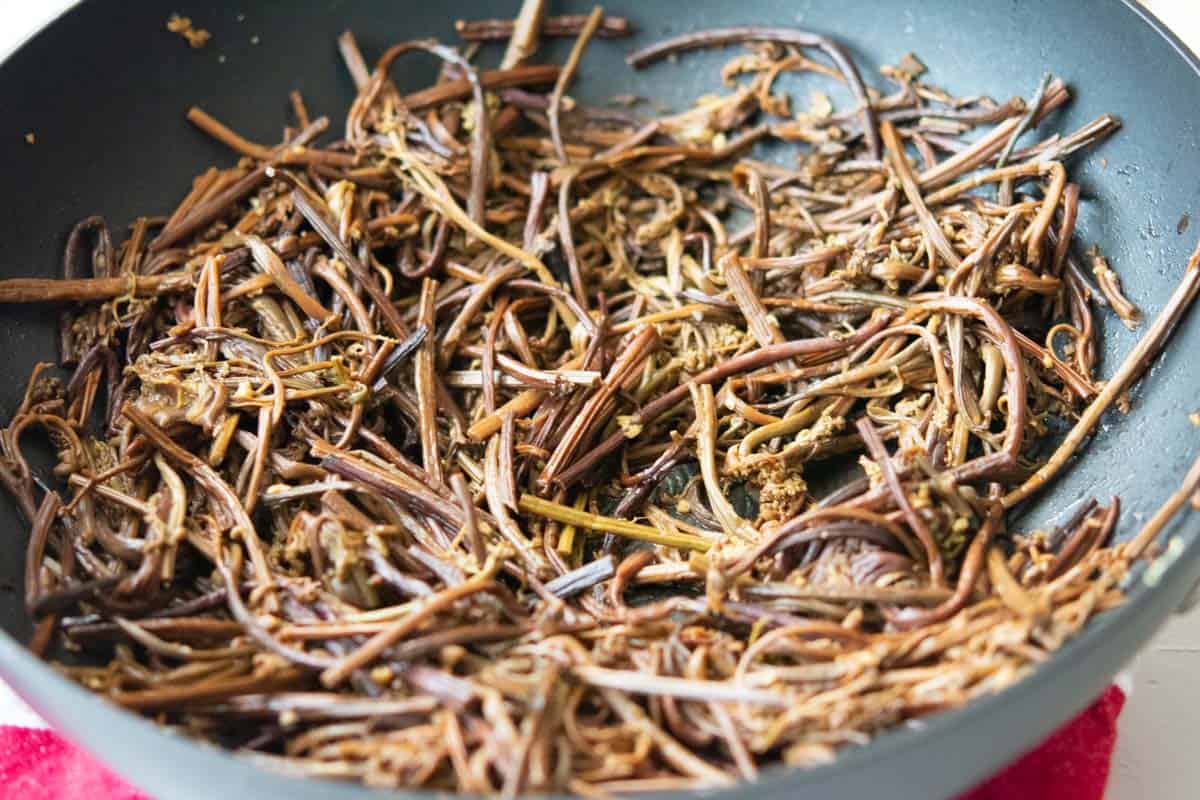

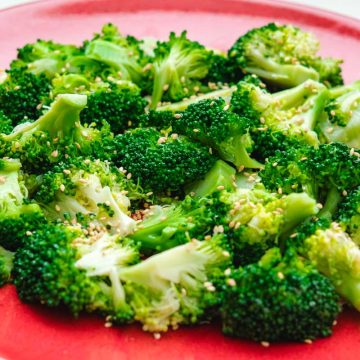
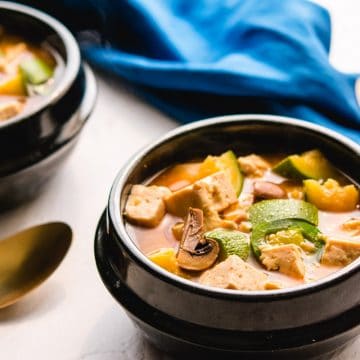
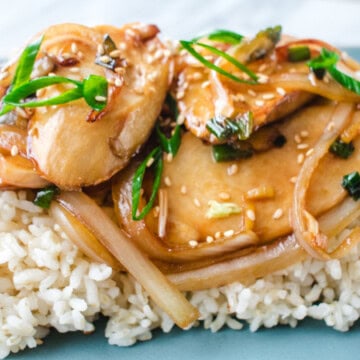

Chuck Masterson says
Those aren't flower buds - they're leaves, curled up into tight little rolls. (Well, strictly, fern leaves aren't called leaves, they're called fronds, and the separate sections of them are called pinnae.) Ferns don't actually make flowers at all. They reproduce by way of spores. They're a very strange, ancient group of plants.
asiantestkitchen@gmail.com says
Hi Chuck! I didn't know they were leaves that looked like flower buds. Thank you so much for providing this helpful information and visiting this site! I do agree it's a strange plant. 🙂
Liz says
I have always known this dish to be called "mountain vegetable" and never quite understood what it was. I'm glad to understand its origins and how to make it! Thank you for such an informative article!
Deanna @ Agile Test Kitchen says
Thank you so much Liz for the kind comment and for taking the time to visit and read this post. Yes, I have oft heard this called a mystery "mountain vegetable" too at restaurants where they don't quite explain it in detail. The world could use more people like you! 🙂